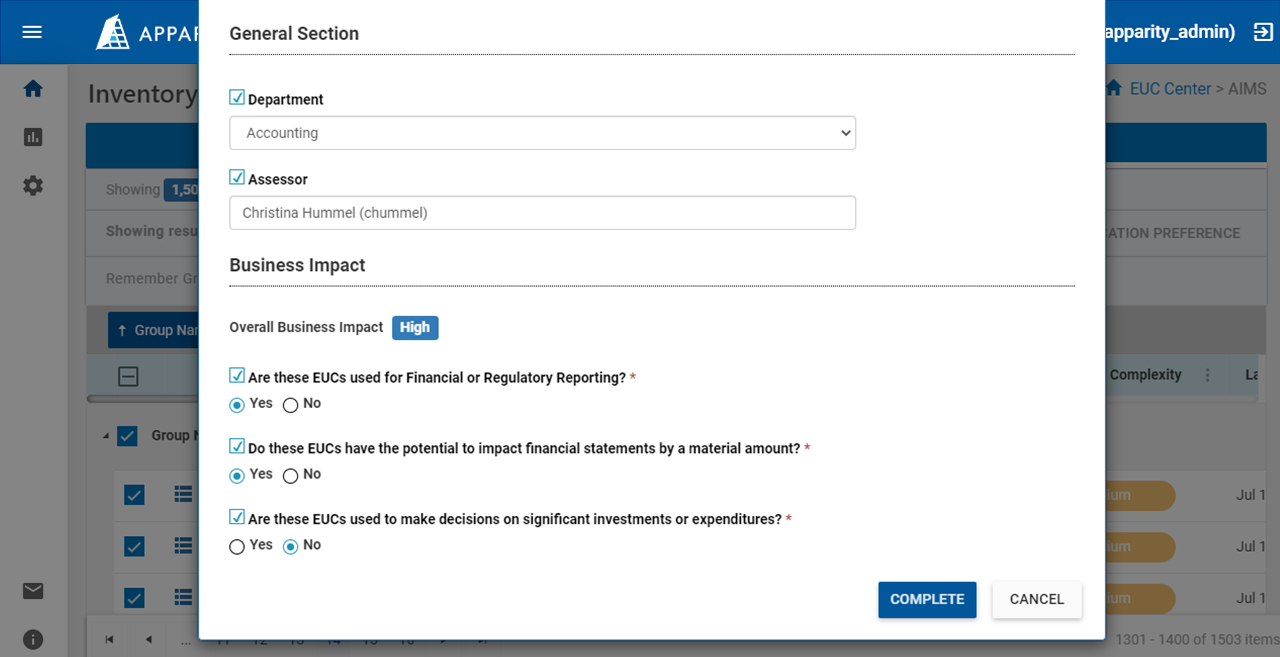Not All EUCs Are Created Equal
Finding your important EUCs can be a challenge if you don’t know where to start. Before we dive deeper into this topic, let’s take a step back.
How many saved spreadsheets do you think your whole organization has? How about your department? And on your computer? Attempting to answer that question even at the most basic level is a challenge. That doesn’t account for added layers of complexity when considering spreadsheets and other EUCs used for reporting or copies and derivatives of those files. Remember, EUC stands for end user computing, where an end user is basically a specific person. The larger the organization, the greater the number of end users, and the greater the number of EUCs! As you can imagine, there’s likely a lot out there.
Your first step in getting a true understanding of “what’s out there” is to define an EUC policy. The EUC policy is essentially the most important document in defining your EUC management strategy. Next, you scan your organization’s shared network drives or other locations with a tool like Apparity’s Discovery module to identify EUCs such as Excel spreadsheets and Access databases. With these over-simplified steps complete, you’ve probably uncovered a very large number of files.
Do all these files matter? As mentioned in a previous blog post, you likely don’t care if the spreadsheet used to coordinate the holiday potluck has controls or not. But the spreadsheet used in financial or regulatory reporting is a different story. The question then becomes “what’s really in scope?” or “what’s important for our organization?”, and circles us back to the original topic of finding your important EUCs. Enter the latest iteration of Apparity’s Rapid Discovery Assessment.
Rapid Discovery Assessment helps those responsible for EUCs efficiently review and analyze discovered files for business impact and EUC policy scope. It is fully customized to an organization’s unique requirements so that these questions can be truly answered, and you can begin to get a grasp on the risk these critical files actual present. Here are some of the highlights of the Assessment form:
One and Done
Apparity natively groups copies of a file together, allowing an accessor to evaluate the collective group at once. This helps provide a more compete view of your files, saving time and effort in having to find and assess every variation of the file.
Getting Intimate
Often, organizations assign a dedicated team for all stages of EUC management. Although this team will have the highest vantage point of the EUC landscape, it would be unreasonable to assume they would know the essence and impact of every EUC. Apparity Rapid Discovery Assessment offers a Group Summary view to help identify the people who have modified a file and therefore should have intimate knowledge of it. The dedicated EUC team can then assign these files to the appropriate department and people to determine whether the files have any business impact and fall under the EUC policy.
Paper Trail
Each iteration of a file’s Discovery review is tracked to create a paper trail, providing peace of mind and maximum confidence when time comes for an audit.
All Sorted Out
In conclusion, Rapid Discovery Assessment provides your organization a fast, yet transparent way of finding your important EUCs from the greater file population. You would then use a tool like Apparity’s Registration module to assess the complete risk of those files.







